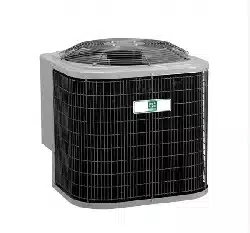
Specifications subject to change without notice.
421 01 5501 05 4/10/18
INSTALLATION INSTRUCTIONS
R- 410A Split System Air Conditioners
NXA4/6 N4A3/4/5/6 R4A3/4/5 WCA3/4/5/6
These instructions must be read and understood completely before attempting installation.
IMPORTANT: Effective January 1, 2015, all split system and packaged air conditioners must be installed pursuant to
applicable regional efficiency standards issued by the Department of Energy.
SAFETY CONSIDERATIONS
Improper installation, adjustment, alteration, service,
maintenance, or use can cause explosion, fire, electrical
shock, or other conditions which may cause death, personal
injury, or property damage. Consult a qualified installer,
service agency, or your distributor or branch for information
or assistance. The qualified installer or agency must use
factory- authorized kits or accessories when modifying this
product. Refer to the individual instructions packaged with
the kits or accessories when installing.
Follow all safety codes. Wear safety glasses, protective
clothing, and work gloves. Use quenching cloth for brazing
operations. Have fire extinguisher available. Read these
instructions thoroughly and follow all warnings or cautions
included in literature and attached to the unit. Consult local
building codes and current editions of the National Electrical
Code (NEC) NFPA 70. In Canada, refer to current editions of
the Canadian electrical code CSA 22.1.
Recognize safety information. This is the safety- alert symbol
!
!
When you s ee this symbol on the unit and in instructions
or manuals, be alert to the potential for personal injury.
Understand these s ignal words; DANGER, WARNING, and
CAUTION. These words are used with the safety- alert
symbol. DANGER identifies the most serious hazards which
will result in severe personal injury or death. WARNING
signifies hazards which could result in personal injury or
death. CAUTION is used to identify unsafe practices which
would result in minor personal injury or product and property
damage. NOTE is used to highlight suggestions which will
result in enhanced installation, reliability, or operation.
!
WARNING
ELECTRICAL SHOCK HAZARD
Failure to follow this warning could result in personal
injury or death.
Before installing, modifying, or servicing system, main
electrical disconnect switch must be in the OFF
position. There may be more than 1 disconnect
switch. Lock out and tag switch with a suitable
warning label.
EXPLOSION HAZARD
Failure to follow this warning could
result in death, serious personal
injury, and/or property damage.
Never use air or gases containing
oxygen for leak testing or
operating refrigerant compressors.
Pressurized mixtures of air or
gases containing oxygen can lead
to an explosion.
!
WARNING
GENERAL
NOTE: In some cases noise in the living area has been
traced to gas pulsations from improper installation of
equipment.
1. Locate unit away from windows, patios, decks, etc.
where unit operation sound may disturb customer.
2. Ensure that vapor and liquid tube diameters are
appropriate for unit capacity.
3. Run refrigerant tubes as directly as possible by
avoiding unnecessary turns and bends.
4. Leave some slack between structure and unit to
absorb vibration.
5. When passing refrigerant tubes through the wall, seal
opening with RTV or other pliable silicon- based caulk.
(See Fig. 1.)
6. Avoid direct tubing contact with water pipes, duct work,
floor joists, wall studs, floors, and walls.
7. Do not suspend refrigerant tubing from joists and
studs with a rigid wire or strap which comes in direct
contact with tubing.(See Fig. 1.)
8. Ensure that tubing insulation is pliable and completely
surrounds vapor tube.
9. When necessary, use hanger straps which are 1 in.
(25.4 mm) wide and conform to shape of tubing
insulation. (See Fig. 1.)
10. Isolate hanger straps from insulation by using metal
sleeves bent to conform to shape of insulation.
Loading ...
Loading ...
Loading ...

